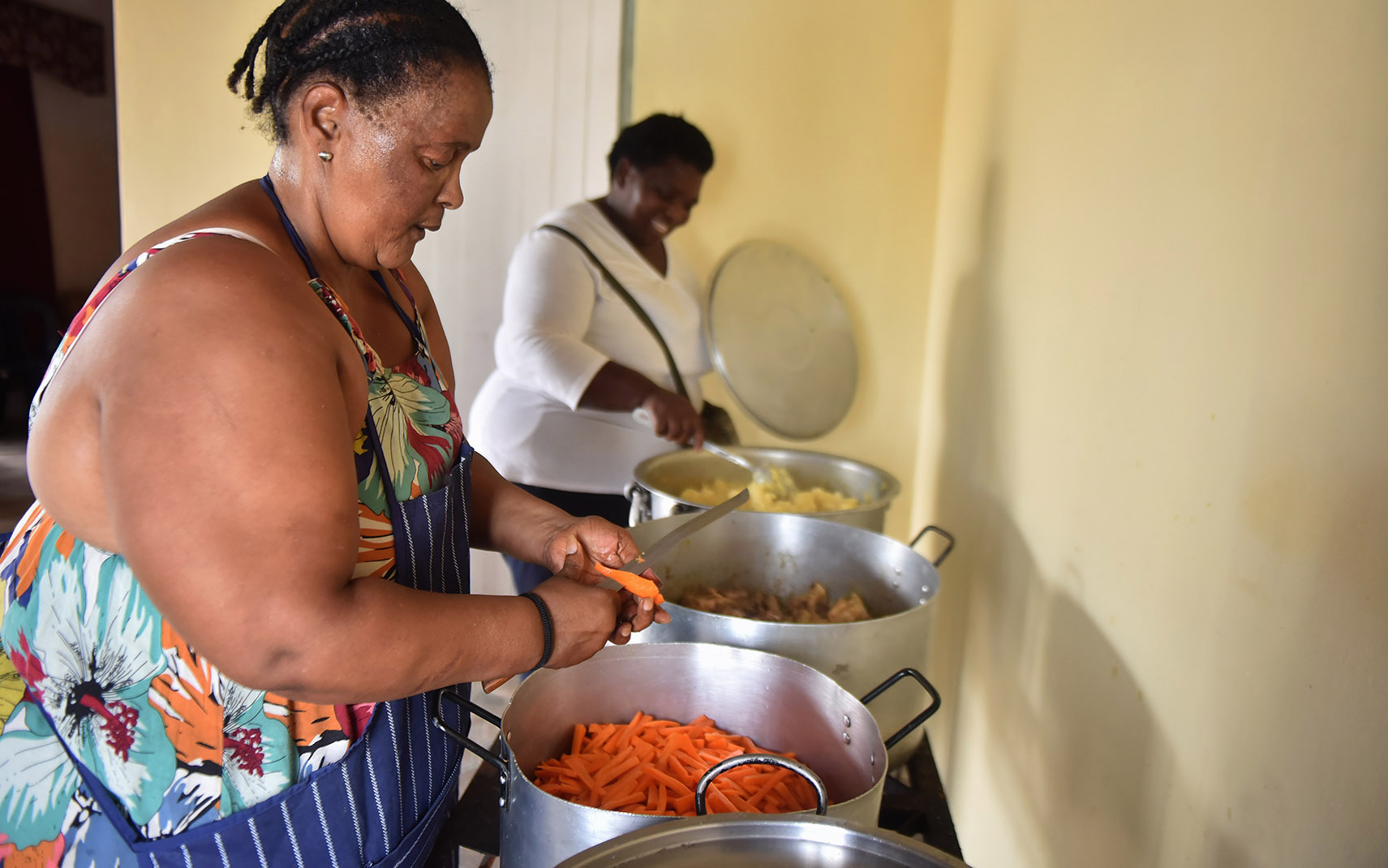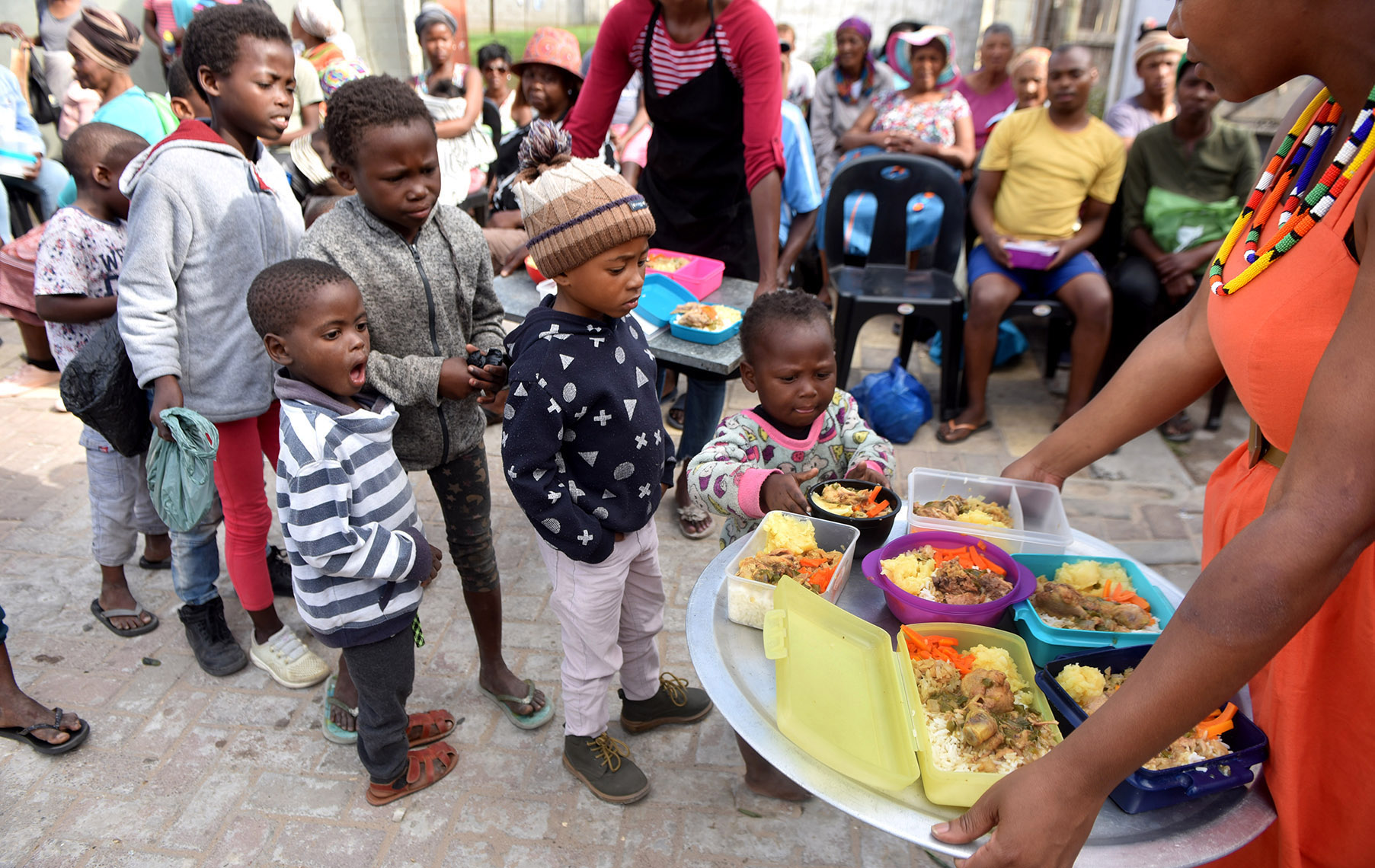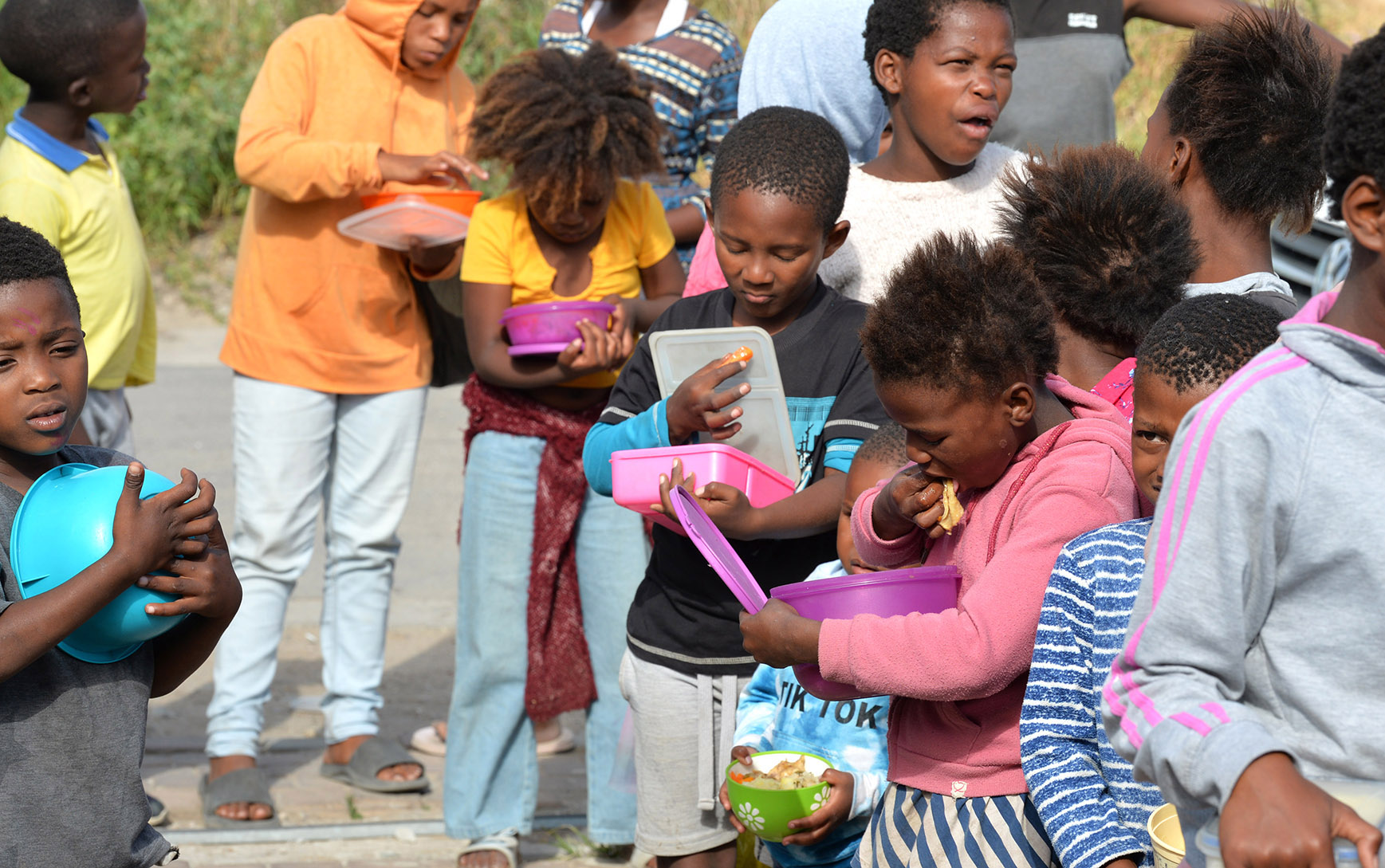BATTLE FOR SURVIVAL
Desperate children are eating cow dung to line their stomach for lifesaving medicine, say researchers
Children in the Eastern Cape are eating cow dung and leaves to have something in their stomach to take their antiretrovirals. Food shortages in the province have hit the poor especially hard, and according to the latest figures it has lost track of one child in every four that have been started on ARVs, with Nelson Mandela Bay losing almost one in two. While food is not the only reason for this and stigma and transport costs also play a role, community workers are saying that access to enough and proper nutrition has become a huge problem.
Children are eating cow dung and leaves in the Eastern Cape just to get something in their stomachs so they can take their antiretroviral (ARV) medication, researchers at the Nelson Mandela University’s HIV and Aids Research Unit have found.
“In some of our studies, where we were interviewing communities, we found that children were eating cow dung, leaves, anything they can find just so that they can take their ARVs,” Dr Rose Kalenga, the director of the HIV and AIDS Research Unit at the Nelson Mandela University, said.
Many of those interviewed had said they only took their ARVs when they feared the virus would cause their death, and that when they felt better they would stop taking them.
Kalenga said having enough food is hugely important in the treatment of HIV.
Her reports are backed up by similar ones Corene Conradie from Gift of the Givers had received about children in the rural parts of the province eating leaves to fill them up.

Volunteers prepare food at the Walmer Angels Soup Kitchen in Gqeberha, Eastern Cape. (Photo: Deon Ferreira)
In a recent speech, Gift of the Givers founder Dr Imtiaz Sooliman said it has become normal to starve in the Eastern Cape.
Activist Athini Ngxumza, who is living with HIV herself, said ARVs also make one very hungry. “You feel like you have a hole in your tummy.
“Many of us only have enough for one meal a day. If you only have enough food at night you take it then because then you will be sleeping and you won’t feel so hungry. Otherwise you will have a grumbling stomach.
“It is a very difficult pill to take without food because it makes you feel very sick. There was a time when I too lived under the dark shadow of not having enough to eat. I had to fight against myself not to stop taking my pills.
“Even now I try to encourage everyone to take their pills. Some ladies here where I live will go out in the morning and do a piece job only to get enough food to take their treatment.
“But you also can’t eat anything. You have to try and eat healthy. If you only have R30 you will get a piece of chicken and maize porridge. It is not so good but it fills that hole in your stomach. Or you make some vetkoek, but you have to worry about your liver.

Meal time at the Walmer Angels soup kitchen in Gqeberha. (Photo: Deon Ferreira)
“The stress of knowing you won’t have enough to eat is also very bad for you. It can take you down all by itself, just worrying about where you will get your next meal.
“I always say we must start a garden here. I struggle with low iron levels and I must try to eat beetroot and livers and so on, but those are very expensive.
“It is also difficult to take your treatment if you are worried if the water is safe. Then you must boil water first.
“I take only one pill a day, but it is a big one. It goes down like a marble. You can feel it in your stomach. You must be in a good space to take a pill like that. Otherwise it won’t go down. You will struggle to make yourself swallow.”
Faced with these struggles, coupled with the persistent stigma in communities, Kalenga said schoolchildren in particular are often compelled to disclose their HIV status to explain absences from class so they can attend the clinic for a check-up.
“Stigma must be addressed,” she said, explaining that they are receiving many reports that both adults and children who attend clinics a day or two late will be made to wait until the end of the day before they are attended to.
Devastating stats
The Eastern Cape health department’s statistics on children who were started on ARVs and now longer attend clinics, are devastating.
“The above report is for children started on treatment between January and June 2021. Of those, the report indicates the associated lost rate.” Kalenga said the 2022 figures will only be updated in 2023.
In Nelson Mandela Bay, the latest available statistics, collated in 2021, show a loss to follow-up rate of 45% – almost double from the previous three months. The provincial average is 25.9%. In Buffalo City, the rate has dropped from 48% to 34%. It remains high in the Sarah Baartman District, covering a large area including large parts of the Karoo and the Sunshine Coast, where the rate is now 33%.
Health spokesperson Yonela Dekeda said the department has a nutrition programme that is guided by the clinical needs of each individual patient. However, it supplies supplements, not food.
“The nutrition programme is not meant for patients only on ARVs, but should their individual situations warrant such intervention, they all qualify to be issued with nutritional support.
In the Eastern Cape the department of social development distributes emergency food relief. But since 2022 the programme has been hampered by maladministration and slow pace of delivery. However, MEC Bukiwe Fanta’s spokesperson, Bukiwe Jemsana-Mantashe, said the MEC was determined to correct the situation.
“The MEC is very concerned about the number of children with malnutrition in the province. But what is even more concerning is the number of children that are not getting the child support grant because they do not have birth certificates.
Julia Mbambo, who runs a very busy soup kitchen in Nelson Mandela Bay said residents had to bury a young mom recently who died while waiting for a child grant for her children. She didn’t have an ID and this had delayed her ability to obtain the grant and buy food for her family. “Now the grandmother will have money to pay off her debt to the funeral home,” she said.
While the picture in the Eastern Cape is particularly grim, Parliament heard during a recent meeting of the portfolio committee for social development that hunger stalks communities across the country.
According to numbers released in September during the committee sitting in 2019, about 11.8% and 13.8% of individuals were vulnerable to hunger. Due to Covid-19, that percentage had increased to about 25% of people.
The Eastern Cape, however, was the only province that did not use its budget to feed the poor in the past few years.
Since the start of the current financial year the department has distributed 1,951 food parcels across the province – 393 in Nelson Mandela Bay, only 18 in Buffalo City and 188 in the Sarah Baartman District.
In contrast a single community organisation such as the Missionvale Care Centre, operating in one of the poorest communities in the metro, hands out 520 food parcels a week and 40 in emergency cases. It also feeds 400 people a day with bread and soup, as well as 170 children who receive lunch and another 170 who receive a snack at aftercare.
Ayanda Ngidi, the district programme manager at the Maternal, Adolescent and Child Health Institute in the Alfred Nzo District, one of the poorest areas in the country, said the problem of teenage pregnancies and its link with continued poverty also is a huge factor.
Visit Daily Maverick’s home page for more news, analysis and investigations
She highlighted the struggles of women in the area, saying they have the highest rate of late antenatal bookings because of limited access to transport. “Pregnant women have to walk 12km to get to the clinic.”
Owing to the high cost of transport people spent more on basic groceries.
“We find that when people default on their treatment it often is because they must all club together to come to the clinic. If you must spend R22 on a return trip to a clinic, most people will rather buy bread. The cost of transport in this area is crazy. But they also do not have enough food. The caregiver will often not take her treatment because what food there is, she has given to the children.
“But the stigma around HIV/Aids is still huge. Many of our patients have not told their families. They may tell a friend. We see a lot of kids who are not virally suppressed because they are being raised by their grannies and they haven’t told them. Teenagers, when they realise that the medicine they are taking is not for their tummy but for HIV, often want to know where they got the virus before they continue with their treatment. We find that the grannies do not understand.”
She added that even when clinics prescribe a supplement for a malnourished child, it is shared among all the children in the family.

Hungry children start eating immediately after receiving their daily meal from a soup kitchen. (Photo: Deon Ferreira)
Busisiwe Mbanyana, the project manager for Buffalo City at Match, said that in the Buffalo City Metro many people live below the poverty line (earning less than R945 a month).
She said the link between poverty and HIV is most often seen in children. “Eleven babies have died of severe acute malnutrition here. Many HIV-positive children had been lost to follow-up, some of them even after only one month of treatment.
“Even though Buffalo City Metro is a more urban area, there are high rates of unemployment,” she said. She added that people living with HIV who had been initiated on treatment and then disappeared would often tell them, once found, that they have no food with which to take their pills.
“We see a lot of patients who are defaulting, more than 3,000 who are unconfirmed loss to follow-up. People come to Buffalo City to find jobs and they move away and we struggle to find them,” she added.
Dr Victoria Mubaiwa, also from Match, said good nutrition was crucial for health. “We encourage people, especially those living in rural areas, to start vegetable gardens. They should be assisted and encouraged to do so.
“Education must happen in a way that patients can understand. Self-sustainable food production will be key,” she said.
Tragically, she said, the health of the child reflects the health of the community. “If we see one child with severe acute malnutrition we know that behind them there are another four or five people who also do not have enough to eat. DM/MC


















 Become an Insider
Become an Insider
Comments - Please login in order to comment.